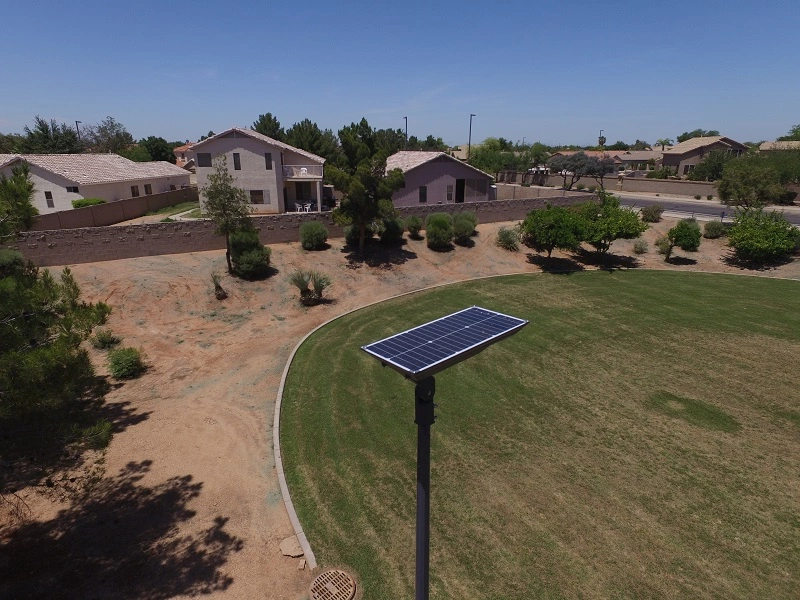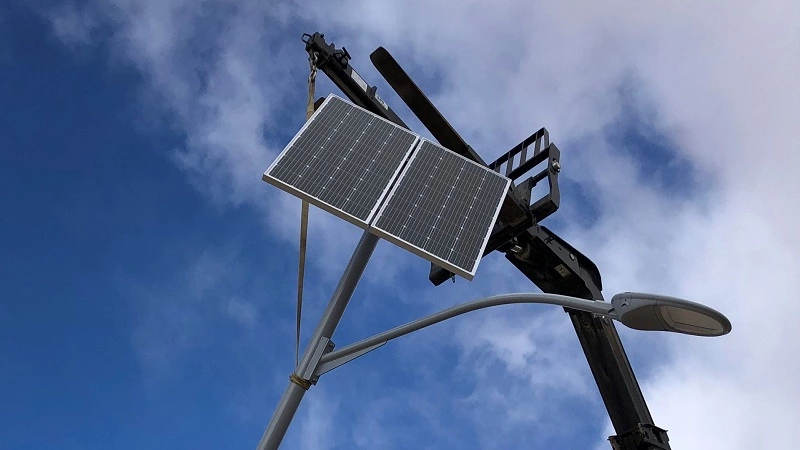Monocrystalline vs. Polycrystalline Evaluating Your Solar PV OptionsPosted by Stephen Shickadance in Most Popular. The Basics. How Solar Lights Work.
Comparing monocrystalline vs. polycrystalline solar panels, the Solar Energy Industries Association (SEIA) estimated that 19.2 gigawatts of electricity in the U.S. was produced by solar power in 2020 — and with the number of solar panel installations being expected to quadruple by 2030, the future of solar has never looked brighter. Defined as the production of electric current across two solids exposed to sunlight, solar photovoltaics (PV) offers a clean, renewable power alternative to conventional fossil fuel-based systems at a time when our planet demands a sustainable energy solution. The rise in demand for solar PV is not only due to the need for cleaner power systems, but also because of the improved performance of modern solar panels. Higher efficiency, longer life, and greater durability are just a few of the technological strides that have been made in the PV industry — and material composition lies at the core of many of these improvements. The properties of a solar cell can vary greatly depending on whether it is made from a single silicon crystal, known as a monocrystalline cell, or multiple crystal fragments, called a polycrystalline cell. Cell material is one of the many engineering factors to consider when designing a solar cell. When we evaluated solar panel options for our commercial solar lighting systems, we had to choose between monocrystalline solar panels (mono) and polycrystalline solar panels (poly). Both types of panels produce energy from the sun, but there are some key differences, which is why, at Greenshine, we use mono panels in all of our solar lighting projects. Difference Between Monocrystalline vs Polycrystalline Solar PanelsAs their names suggest, the primary difference between mono and poly solar panels is the number of crystals comprising each cell. Created by placing a single "seed" crystal in a quartz furnace and slowly drawing it upward in a bed of molten silicon, monocrystalline solar cells are made from a single silicon crystal. This method, known as the Czochralski (Cz) process, results in a uniform silicon ingot with a homogeneous lattice orientation through which electrons may pass more efficiently. Polycrystalline solar cells, on the other hand, are made from multiple silicon crystal fragments that have been compressed and melted together. The result is a mosaic of crystal fragments which are less expensive to manufacture — albeit less efficient. The reason for the lower efficiency is that, unlike monocrystalline cells, whose lattice structure makes for easier charge transport, electrons in polycrystalline solar cells must overcome more resistance as they move from fragment to fragment. Monocrystalline Solar PanelsThe difference between monocrystalline and polycrystalline solar cells may seem abstract at first, but the impacts are much farther reaching than many consider. Are Monocrystalline Solar Panels the Best?Because the movement of electrons — also known as charge transport — is more readily facilitated by mono solar cells than that of their polycrystalline counterparts, they are typically considered superior to polycrystalline cells, as they convert sunlight to electricity more efficiently. In fact, the average monocrystalline solar panel has an efficiency of about 22–27%, while most polycrystalline solar panels have an efficiency of 15–22%. Mono vs Poly Solar Panels EfficiencyThe superior charge transport of mono solar panels makes them more efficient in several ways. A few of those include:
How to Tell the Difference Between Monocrystalline vs PolycrystallineAs important as the engineering considerations are, most people won't notice cell efficiencies or lattice structure. What they will notice is the difference in appearance between mono and poly cells. Their uniform crystal structure makes monocrystalline solar cells a sleek black color, while polycrystalline cells have a bluish hue due to the way the silicon fragments reflect light. Also, because monocrystalline solar cells are cut from a single ingot, their corners are rounded off, while poly cells are square. Polycrystalline Solar PanelsTypically made by a purification method known as the Siemens process, polycrystalline solar panels are made from highly purified polycrystalline silicon. The smaller crystal fragments produced by this process are easier and more cost-effective to manufacture than the single large crystals of mono cells, and once they have been compressed and fused together, electrons can still move through them to create an electric current. However, the presence of grain boundaries within the cell makes charge transport more difficult, leading to inferior electrical output. How Efficient Are Polycrystalline Solar Panels?Although the efficiency of polycrystalline solar panels is about 15–22% compared to the 22–27% of monocrystalline cells, in some cases, the savings in production make the trade–off worthwhile. As shown from the cost ranges listed above, the minimum that consumers can expect to pay for a mono solar panel on a per-watt basis equals the maximum for a poly solar panel, making the median cost of a poly panel about two-thirds that of a mono panel. This has been the reason for the increasing popularity of polycrystalline solar panels, but factors like surface area limitations and weather must also be taken into account. How Long Do Polycrystalline Solar Panels Last?As mentioned earlier, there is little data on the expected lifetime of either type of solar panel, but the average lifespan of both is expected to be at least 25 years. Are Monocrystalline Solar Panels the Best?The efficiency and environmental friendliness of solar panels of any sort make them a go-to for any customer seeking a sustainable solution to their lighting needs. That said, at Greenshine, we find that the smaller surface area, greater efficiency, structural stability, and aesthetic appeal of monocrystalline solar panels makes them worth the extra investment that it takes to deliver the highest quality solar lighting solutions to our customers. That's why we use monocrystalline solar panels on all our solar lighting projects. Now that you are better equipped with an understanding of what distinguishes monocrystalline vs polycrystalline solar panels, you can decide which one meets your project's specifications. If not, we're happy to guide you through the process, so contact Greenshine today to shed some light on what it would take to get your project off the ground. Sources:
Most Popular
The Basics
How Solar Lights Work
|
ArchivesNo Archives Categories
Want More Info? |
LATEST NEWS & ARTICLES

